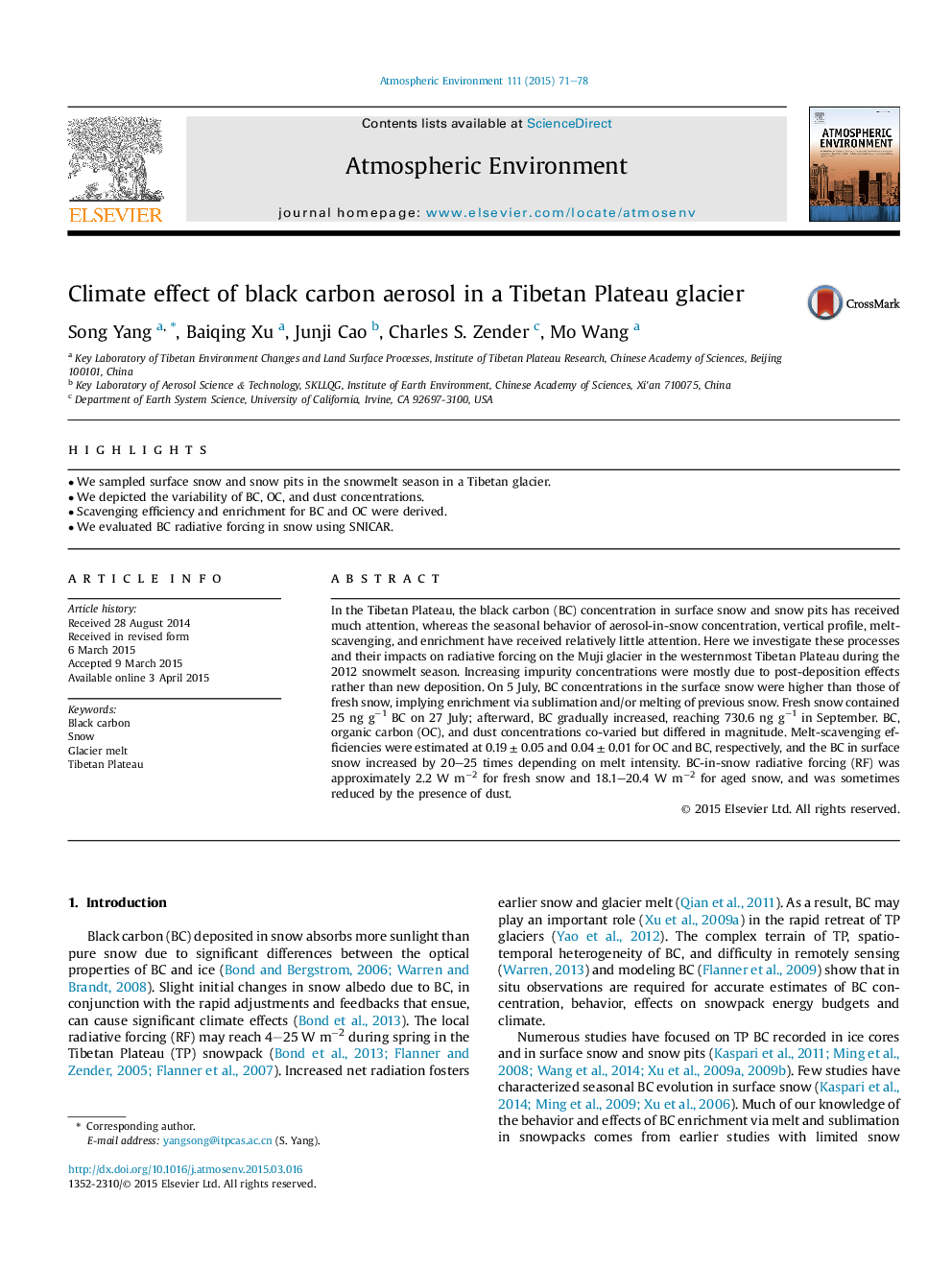| کد مقاله | کد نشریه | سال انتشار | مقاله انگلیسی | نسخه تمام متن |
|---|---|---|---|---|
| 6337938 | 1620360 | 2015 | 8 صفحه PDF | دانلود رایگان |
عنوان انگلیسی مقاله ISI
Climate effect of black carbon aerosol in a Tibetan Plateau glacier
ترجمه فارسی عنوان
اثر آب و هوا از آیرزل کربن سیاه در یک یخچال فاطمه تبت
دانلود مقاله + سفارش ترجمه
دانلود مقاله ISI انگلیسی
رایگان برای ایرانیان
کلمات کلیدی
کربن سیاه، برف، ذوب یخچالها، تبت پلاتو،
موضوعات مرتبط
مهندسی و علوم پایه
علوم زمین و سیارات
علم هواشناسی
چکیده انگلیسی
In the Tibetan Plateau, the black carbon (BC) concentration in surface snow and snow pits has received much attention, whereas the seasonal behavior of aerosol-in-snow concentration, vertical profile, melt-scavenging, and enrichment have received relatively little attention. Here we investigate these processes and their impacts on radiative forcing on the Muji glacier in the westernmost Tibetan Plateau during the 2012 snowmelt season. Increasing impurity concentrations were mostly due to post-deposition effects rather than new deposition. On 5 July, BC concentrations in the surface snow were higher than those of fresh snow, implying enrichment via sublimation and/or melting of previous snow. Fresh snow contained 25 ng gâ1 BC on 27 July; afterward, BC gradually increased, reaching 730.6 ng gâ1 in September. BC, organic carbon (OC), and dust concentrations co-varied but differed in magnitude. Melt-scavenging efficiencies were estimated at 0.19 ± 0.05 and 0.04 ± 0.01 for OC and BC, respectively, and the BC in surface snow increased by 20-25 times depending on melt intensity. BC-in-snow radiative forcing (RF) was approximately 2.2 W mâ2 for fresh snow and 18.1-20.4 W mâ2 for aged snow, and was sometimes reduced by the presence of dust.
ناشر
Database: Elsevier - ScienceDirect (ساینس دایرکت)
Journal: Atmospheric Environment - Volume 111, June 2015, Pages 71-78
Journal: Atmospheric Environment - Volume 111, June 2015, Pages 71-78
نویسندگان
Song Yang, Baiqing Xu, Junji Cao, Charles S. Zender, Mo Wang,
